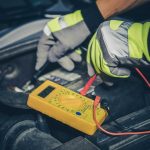With rising gas prices and an increased focus on environmental responsibility, fuel economy has become a hot topic. We all want to squeeze the most miles out of each gallon of gas. However, the amount of fuel your car consumes is not only dependent on the type of vehicle you own but also on the way you drive it. By being conscious of your driving habits, you can significantly improve your car’s fuel efficiency. This article will delve into the optimal driving techniques that will help you save on fuel and reduce your vehicle’s carbon footprint.
Understand Your Vehicle’s Fuel Consumption
Before you can begin to improve your car’s fuel economy, it’s important to understand how your vehicle consumes fuel. Like any machine, a car relies on energy to function. This energy comes from the fuel you put in your tank.
Also read : What are the latest advancements in automotive safety technology?
When you start your car, the engine begins to burn fuel to produce energy. This energy is then used to power the various components of your vehicle, such as the wheels, air conditioner and electrical systems. However, not all of this energy is utilised effectively. In fact, according to the U.S. Department of Energy, only about 15-30% of the energy from the fuel you put in your gas tank gets used to move your car down the road. The rest is lost to engine and driveline inefficiencies, or used to power accessories.
Therefore, your driving habits can have a significant impact on your vehicle’s fuel economy. By driving more efficiently, you can increase the percentage of energy that is used to move your car, thus reducing your fuel consumption.
In the same genre : How should you react in a car breakdown on the motorway?
Drive at an Optimal Speed
One of the simplest ways to improve your fuel economy is by maintaining an optimal speed. Contrary to popular belief, driving faster does not always mean getting to your destination more quickly. In fact, the faster you go, the more fuel your car consumes.
According to the U.S. Department of Energy, fuel efficiency usually decreases rapidly at speeds above 50 mph. Each 5 mph you drive over 50 mph is like paying an additional $0.18 per gallon for gas. Therefore, by maintaining a steady speed within the optimal range, you can significantly reduce your fuel consumption.
This is not to say that you should always drive at 50 mph. The optimal speed for fuel economy can vary depending on the type of vehicle you drive and the current traffic conditions. However, as a general rule, maintaining a steady speed and avoiding unnecessary acceleration and deceleration can help improve your fuel economy.
Use Your Gears Efficiently
The way you use your gears can also have a significant impact on your vehicle’s fuel economy. If you drive a manual transmission vehicle, it’s important to shift gears at the right time to maintain an optimal engine speed.
Shifting up at around 2,000 rpm (revolutions per minute) for diesel cars, and 2,500 rpm for petrol vehicles, is often the most efficient method. This will keep the engine’s workload to a minimum, thus reducing fuel consumption.
If you drive an automatic vehicle, try to stay in the highest gear possible without laboring the engine. Most automatic vehicles are equipped with an Overdrive (OD) function, which allows the engine to operate at a lower speed. Using the OD function can improve your fuel economy, especially during highway driving.
Embrace Smooth Driving
Smooth driving is key to improving your vehicle’s fuel economy. Jerky movements, such as sudden acceleration or braking, can significantly increase your fuel consumption.
According to the U.S. Department of Energy, aggressive driving (speeding, rapid acceleration, and braking) can lower your gas mileage by roughly 15% to 30% at highway speeds and 10% to 40% in stop-and-go traffic. Therefore, by adopting a smoother driving style, you can potentially save hundreds of dollars each year on fuel.
Try to anticipate the traffic ahead and adjust your speed gradually. Use your brakes sparingly and only when necessary. If you find yourself stuck in traffic, switch off the engine to save fuel. These small changes to your driving style can lead to significant savings.
Keep Your Vehicle in Good Condition
Finally, keeping your vehicle in good condition is another effective way to improve your fuel economy. Regular maintenance, such as changing the oil and filters, checking the tires, and servicing the engine, can ensure that your vehicle runs efficiently.
An engine that is not properly maintained will have to work harder to deliver the same power, which can lead to increased fuel consumption. Similarly, under-inflated tires can create more resistance, making your engine work harder and consume more fuel.
Regular maintenance checks will not only help improve your fuel efficiency but also extend the lifespan of your vehicle. It’s a win-win situation.
By implementing these optimal driving techniques, you can significantly improve your vehicle’s fuel economy. Not only will you save money on fuel, but you will also contribute to a greener planet. So, the next time you get behind the wheel, remember to drive wisely. Every little bit helps.
Leverage Cruise Control for Fuel Efficiency
Cruise control is a handy feature that can be utilized to achieve optimal fuel efficiency. When driving on the highway, or any situations where you can maintain a steady speed, cruise control can be a significant advantage.
This feature maintains your vehicle at a steady speed, thereby eliminating unnecessary acceleration and deceleration, which can significantly increase fuel consumption. According to a study by Edmunds, using cruise control at highway speeds can improve fuel economy by 7% on average.
While using cruise control, it is crucial to remember that it is not ideal in all driving conditions. In heavy traffic or on steep hills, cruise control can actually lead to increased fuel consumption. This is because the system will strive to maintain the set speed, causing more acceleration or deceleration than necessary.
If you are driving in an area with lots of stops and starts, it’s better to manage your speed manually. But if you’re driving on a relatively flat highway or a road with few stops, cruise control can help you maintain a constant speed, which is one of the key factors for fuel efficiency.
Avoid Unnecessary Use of Air Conditioning
Air conditioning is another aspect of driving that can have a significant impact on your car’s fuel consumption. While it may be a necessity on hot days, it is important to remember that air conditioning can increase your vehicle’s fuel consumption by up to 20%.
One technique to conserve fuel is to use the air conditioning sparingly and at a moderate temperature. Instead of immediately cranking up the AC when you get in a hot car, try opening the windows for a few minutes to let the hot air escape. Also, parking in the shade can keep your car cooler and reduce the need for air conditioning.
While driving, consider using the vehicle’s ventilation system instead of the AC, especially on the highway. Although the drag from open windows can reduce fuel economy at high speeds, the energy required to run the air conditioning at maximum can be more costly in terms of fuel consumption.
In conclusion, adopting fuel efficient driving techniques can go a long way in improving your vehicle’s fuel economy and saving you money. It is not just the car’s make and model that affects fuel efficiency, but also how it’s driven and maintained.
Whether it’s maintaining a steady speed, using gears efficiently, avoiding unnecessary use of AC, or leveraging cruise control, every little bit helps in making your driving more fuel efficient. Regular maintenance checks and keeping your vehicle in good condition can also greatly enhance your vehicle’s fuel economy.
By keeping these tips in mind, you can not only save fuel and save money, but also contribute to a greener planet. Remember, the key is consistency and patience. Change won’t come overnight, but with steady effort and practice, you can make a significant difference.
So, the next time you get behind the wheel, take a moment to consider how you can employ these efficient driving techniques to improve your car’s fuel economy. After all, every drop of fuel saved is a step towards a more sustainable future.











